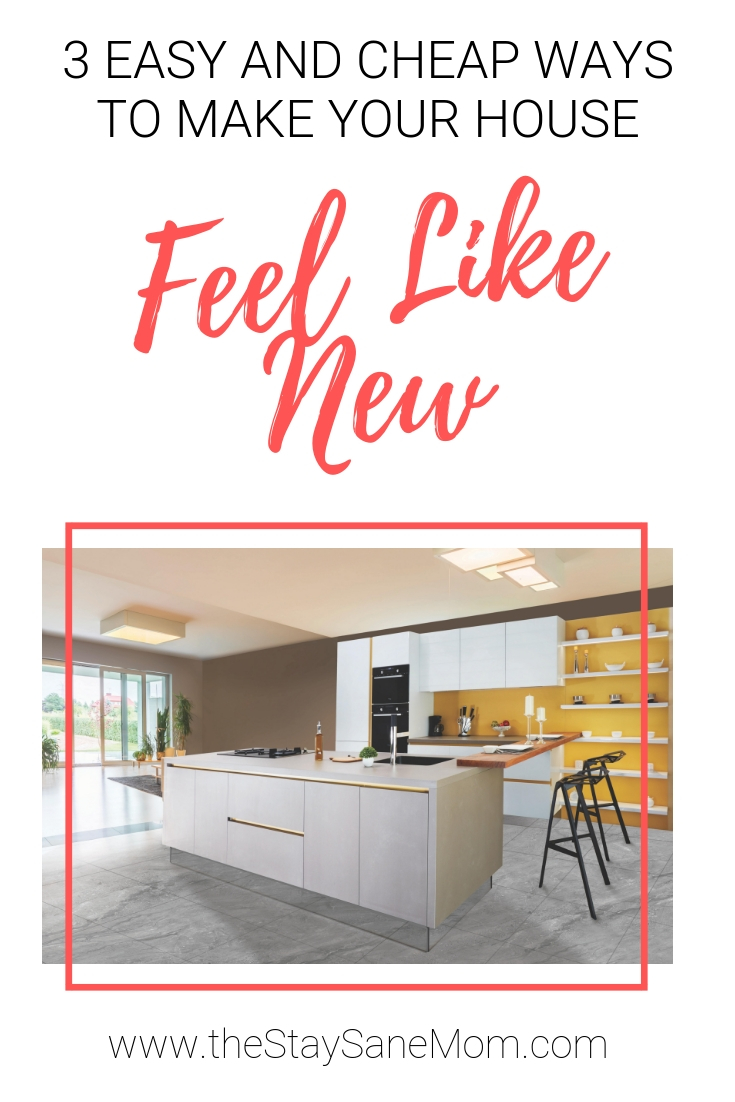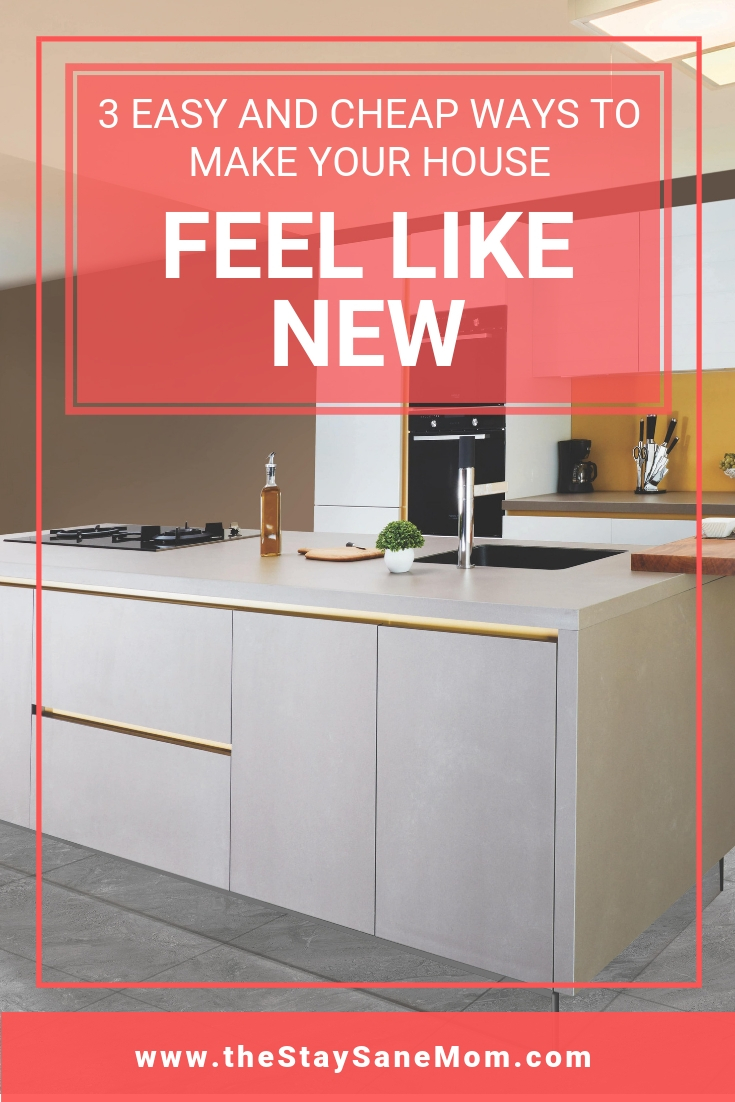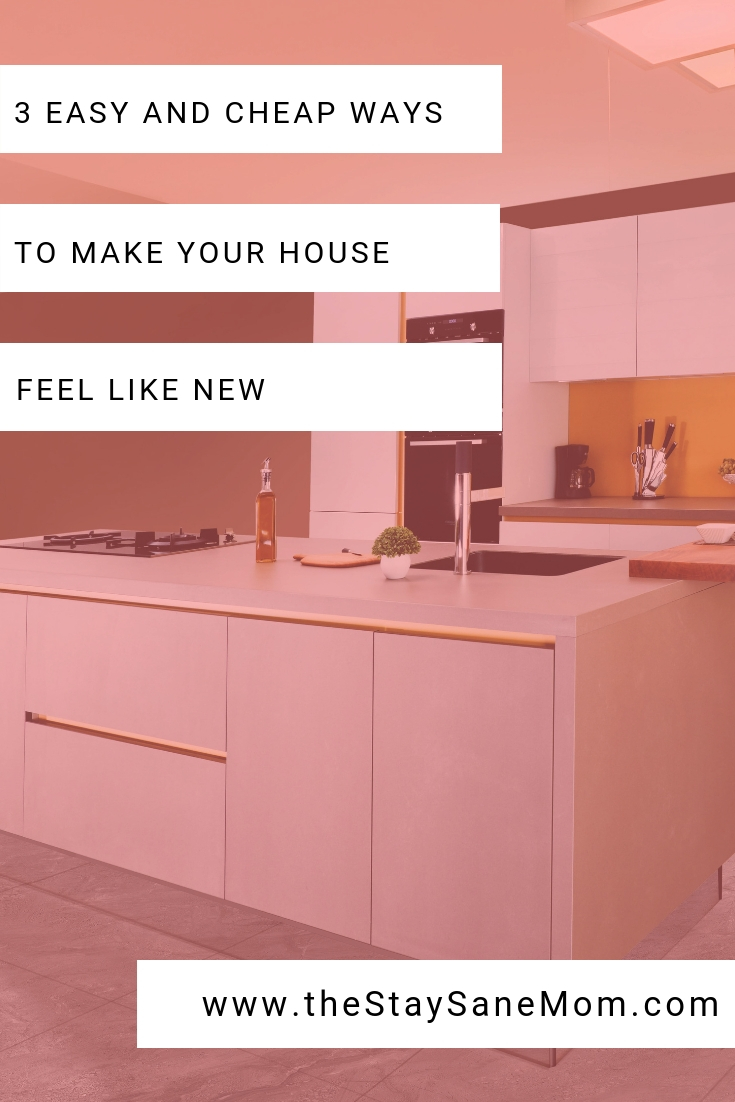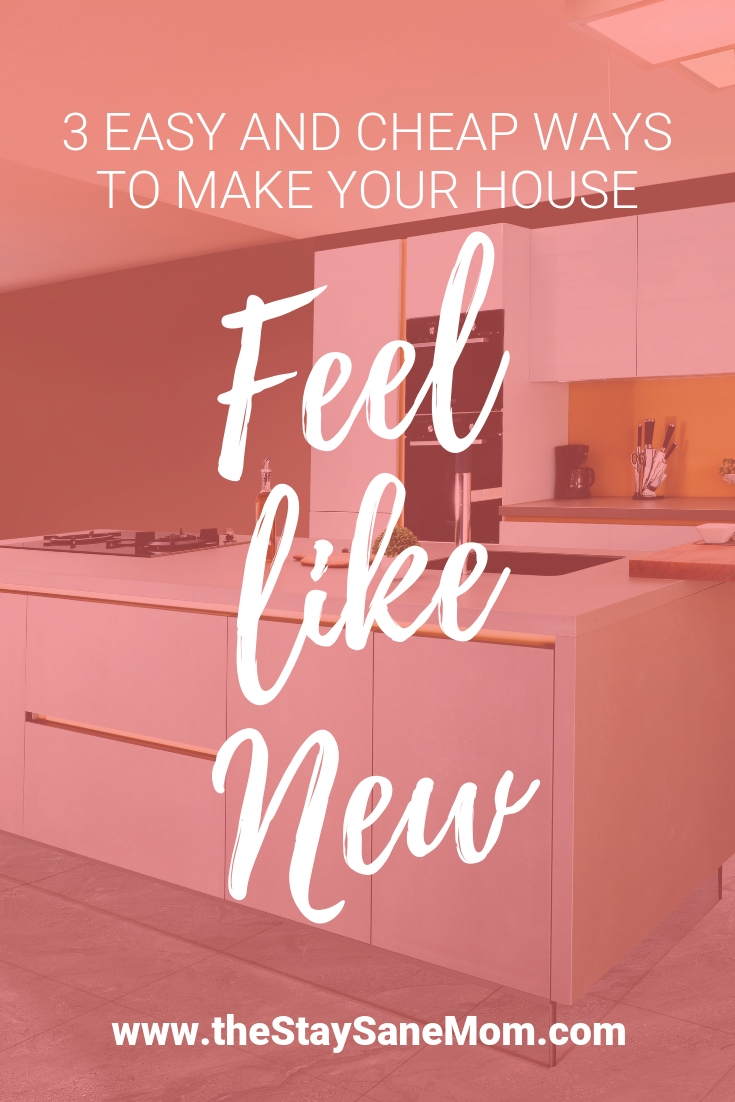3 Easy and Cheap Methods to Make Your House Feel Like New

3 Easy and Cheap Methods to Make Your House Feel Like New
Even in a mostly clean and largely well-organized room, I am going to get sick of my own house after a few months. Here are three easy, quick, and relatively inexpensive methods for transforming a room or area of your house to look like new.
Written by Liz Bayardelle, PhD | See Comments | Updated 05/15/2019
Want to cut to the chase?
Failproof Monthly Budget

3 Easy and Cheap Methods to Make Your House Feel Like New
This post contains some affiliate links for your convenience. Click here to read my full disclosure policy.
Let's face it. Even in a mostly clean and largely well-organized room, I am going to get sick of my own house after a few months.
I think it's my chronic perfectionist making friends with my mild add to form the perfect storm of discontent when it comes to my house.
It starts slowly. At first I walk into a room and roll my eyes. I'm not even sure why, but what looks perfectly clean, organized, and lovely a few months ago now really bums me out for some reason.
I think it's the maternal version of Wanderlust. I don't need to travel to new places all the time (in fact, I have great social anxiety if I leave my darling living room) but I'll be damned if I am content with an organizational scheme for more than three months without starting to get twitchy.
If you suffer from a similar problem, here are three easy, quick, and relatively inexpensive methods for transforming a room or area of your house to look like new, without actually calling up Playoust Churcher Architects for a massive overhaul to your home.
Method #1: The Furniture Shuffle
I’ve written about this before in blogs about how to spruce up your home on a budget or how to organize your home like a model home, but how your furniture is arranged makes a huge difference.
Before you even get to the clutter your children have deposited on every available surface, the arrangement of your furniture can impact the flow the room, how much light you get from whatever windows you might have, and most importantly how much space you have.

If you have gotten bored with your house, or with a specific room, the first thing I would advise is either rearranging the furniture within one room, or better yet, taking a piece of furniture from one room, switching it with a piece of furniture in another, and then mildly rearranging both rooms.
This “furniture shuffle” does two main things.
First, seeing something in a different place, hopefully a better and more logical place than where it lived before, will satisfy that need for something new.
You don't actually need a new dresser, and table, or whatever Pinterest item you have been lusting over lately. By changing up your furniture, you can assuage your homebound wanderlust (renovation-lust?) without accruing massive Ikea bills.
Second, If you do this often enough, slowly your furniture will migrate into the best possible location in your house.
No one who organizes perfectly on the first try. Especially if you have moved houses, you just kind of throw your furniture where it makes most sense at the time, but until you lived in a house for a while you never really know what you're living patterns are going to be and what you're going to need wear.
You can take that dresser that never really fit in your guest bedroom, turn it into a TV stand in your living room, and get rid of that awkward chair (the one no one ever actually sits in anyway) and set up a perfect reading nook in the space vacated by the previously-awkward dresser. All in one fell swoop.
Method #2: Minimalism, Thy Name is Goodwill
Houses attract clutter like scantily-clad women attract men of dubious ethical proclivities.
(How’s that for a weird simile?)
But you all know what I'm talking about. You start out with a clean countertop. Your oldest one comes home with a pretty bold and made an art class and you can't say no, so you put it on the kitchen counter. That then becomes the place where seasonal candy lives, because you might as well, because it's there anyway.
Pretty soon a board game has joined the bowl on the counter, then it's where people start to put their water bottles overnight...And so on and so forth until your counter has a border of random objects around it and is no longer clean or organized-looking.
Anytime you're bored or displeased with a room, my first advice would be to take everything off of any counters, visible just please with a room, my first advice would be to take everything off of any counters, visible shelves, or table tops.
(For now you can just put all these items in a big pile in the corner of the room or on the floor.)
The next step is to slowly replace items in order of importance. First, put back the things that are absolutely necessary.
However, before you put something back, do a double check that that is the most logical place for that I have to live sometimes putting the coffee maker in the opposite corner of the kitchen changes everything.
As you put away items, you will reach a point when you realize you're putting away things that are no longer “essential” but “optional”.
At this point, I highly advise you just stop putting things back.
Seriously. Just stop.
Everything else in the pile probably doesn't belong there anyway, it's just there because you don't have anywhere else to put it.
For the remaining items in the file oh, you have two choices. You can either rehome that object somewhere else in your house, preferably somewhere more logical, less visible, or (ideally) both or you can put it directly in the Goodwill pile.

I know it's counterintuitive to throw away things you see everyday, your kids have made, or aren't technically old, dirty, or in disuse. It feels wasteful, and we have been raised with the “eat everything on your plate even if you aren't hungry” philosophy of home decoration.
However, letting objects control you through Goodwill guilt is not helping your family at all. If it's not something you use frequently and you don't have any major emotional attachment to it, it would probably be much happier in someone else's home. You could even be making someone else's home more beautiful by donating.
There’s nothing like a good “chuck everything” binge to make a dingy room feel new again.
Method #3: One Upgrade at a Time
I must mention at this point that sometimes home upgrades are necessary. If your bathroom tile is from the Nixon era, it's very likely that eventually it might just need to be replaced.
The internet is ridiculously full or amazing budget friendly household upgrades.
My biggest advice here is just to be organized about it. Sit down with your spouse and make a list of everything that bugs you about your house. All of the renovations you wish you could do if you won the lottery.
Then, put this list in order of priority.
(Obviously, things like ceiling leaks or faulty roofing will probably be at the top of the list, because they have the potential to cause you pain and financial distress.)
Shortly after the important maintenance items will fall the things that bug you most about your house. Your list will slowly get less and less urgent until you get to your “dream home renovation” items that you never really intend to do, but it's fun to fantasize about.
Next, set aside a certain amount of money each month, even if it's a very small amount, and when this renovation savings account files up enough to do the first item on your list, you can upgrade guilt-free.
Then lather, rinse, repeat and you can work your way through your entire upgrades list in no time.
Start Your Next Step
Failproof Monthly Budget

Get Sanity, Delivered to Your Inbox.
Care to Share?




About the Author

Liz Bayardelle, PhD
Founder | Contributor
Liz (or Dr. Mommy, as her toddler started calling her after learning what a PhD was) is the happily sleep-deprived mom of a toddler (and professional raccoon noise impersonator), a sparkle-clad kidnado, a teenage stepdaughter, 200 cumulative pounds of dog, and herd of dustbunnies (if daily vacuuming doesn't occur). During nights and naptimes, she uses her PhD in business psychology as an author, speaker, and consultant. She also serves as an executive and principal for three companies, two of which she co-founded with her very patient (and equally exhausted) husband.





-Budget.jpg)